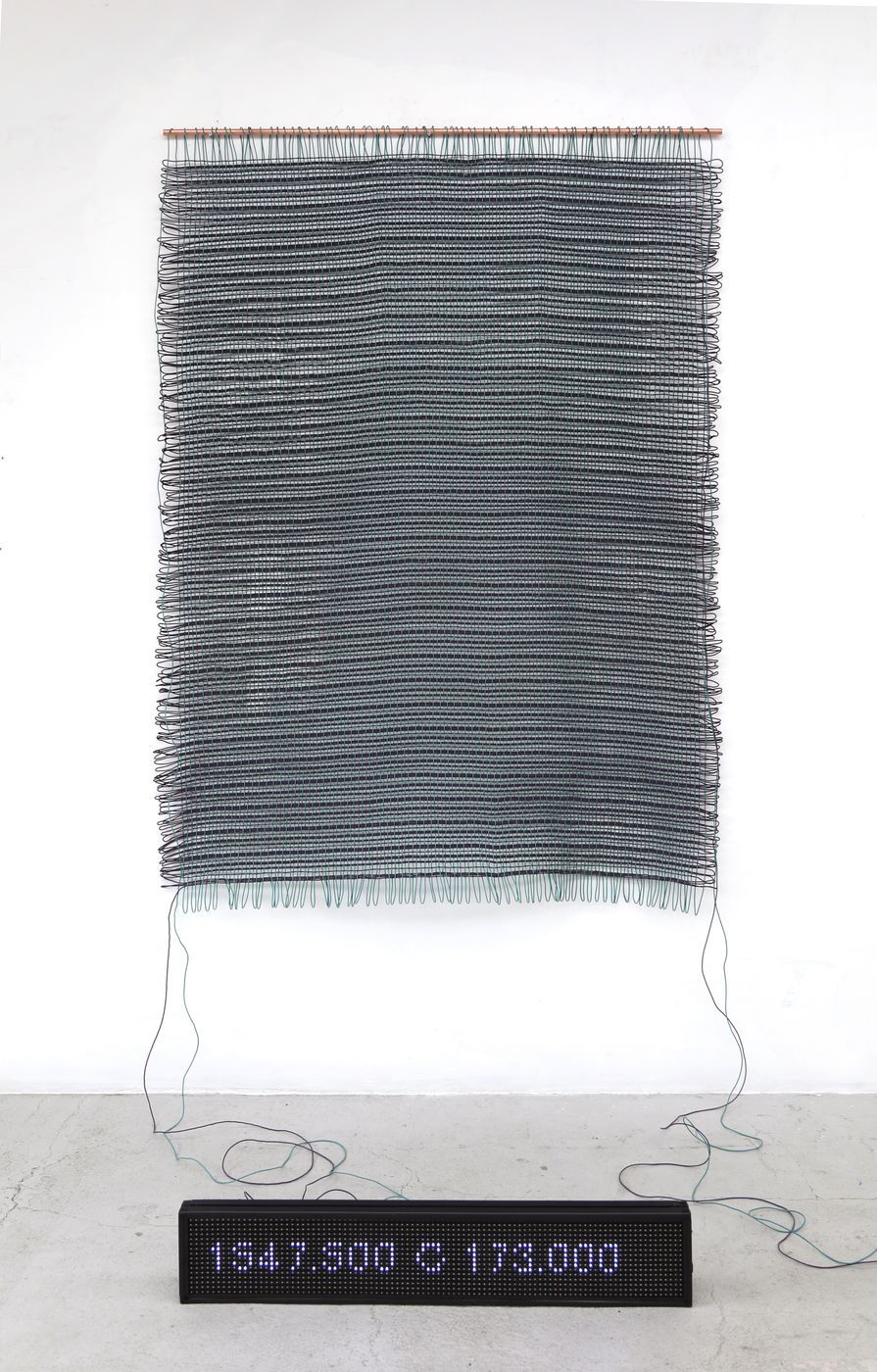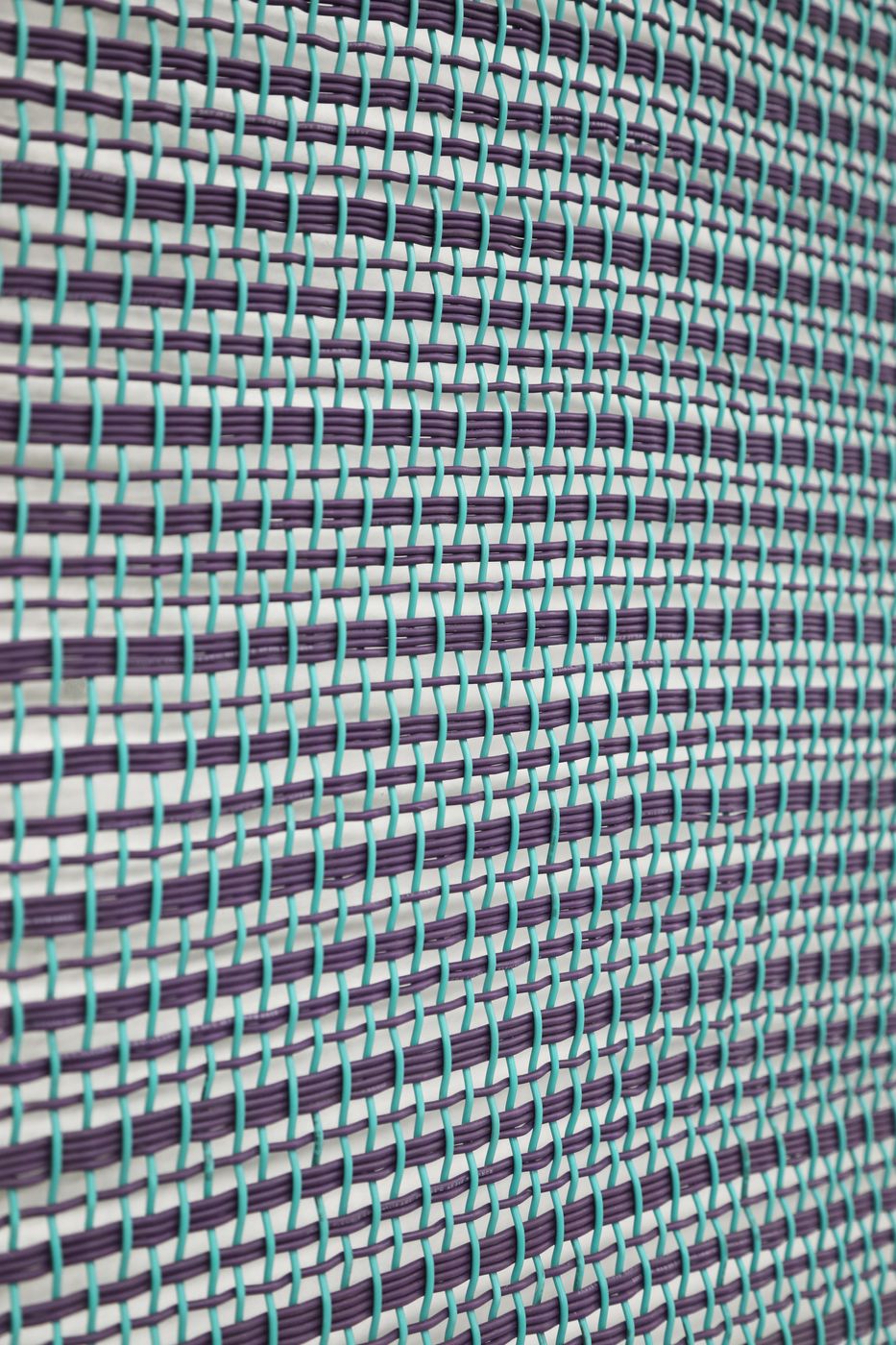


Ximena Garrido-Lecca, Redes de conversión: Plain weave with numerically different groups of wefts(green and purple), 2021
Insulated copper wire and LED panel
82.68 × 59.84 inches
“Redes de conversión” presents a series of textiles made with insulated copper wires, creating patterns and designs based on primary structures of pre-Columbian weaves.
During the elaboration of these pieces, a basic language was developed that represented the action of weaving (and twining) of the cables. By analyzing the weft and warp of each of the pre-Columbian textiles, the repetitions of shapes and colors were transcribed into a written notation system, in order to identify the basic patterns, and thereafter represent their essence. This language - initially represented by diagrams, arrows, numbers, and codes in handwritten notes - was shared with a group of system programmers to be “translated”; into a logical programming code. The weaving patterns were interpreted as constants, to then develop a language based on commands through java script (one of the most used programming codes nowadays). In the case of the textiles with twining elements, a graphic program was used to convert the interlaces and knots to a vector system, translating them into code.
In this exhibition, as in “Arquitectura del humo”, where the smoke - as the converted energy produced by the furnace ́s fire - was
transported through ducts around the gallery, the flow of energy that has been absorbed by the solar panels located on the outside of the building is transported through the cables of the textiles. Through this installation, the different transformations of energy are
highlighted: from solar, to electrical, and then to back to light (through the diodes of the LED screens).
In each of the textiles, the energy that circulates through them, feeds the LED panels that show the code developed by the programmers. The contrast between vernacular textile techniques and contemporary technology systems refers to the changes and conflicts related to modernization in the Andean context. On the one hand, the idea of the solar god in the pre- Hispanic world and the textile tradition are contrasted with notions such as the exploitation of natural resources and mechanized industry (where this type of programming is used for industrialised weaving). At the same time, the code language creates parallels between atavic data storage systems -through wefts and knots- and contemporary code systems, creating a hybrid information language.
As in the law of conservation of energy, which stipulates that energy is in a permanent state of transformation, the textiles, in one way or another, are represented as a flow of information that is constantly changing its form, moving from an ancestral system to a modern technology
in which information travels through wires. The latter, as well is in the process of gradually becoming obsolete, giving way to wireless networks. In the meantime, this series of textiles are inserted as part of this constant transformation. An energy that is changing from one form to another.